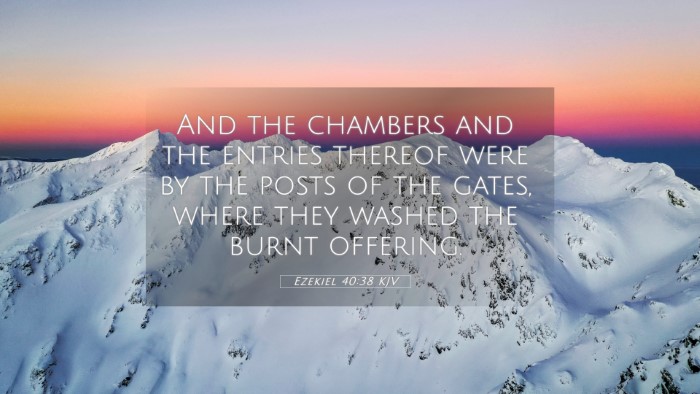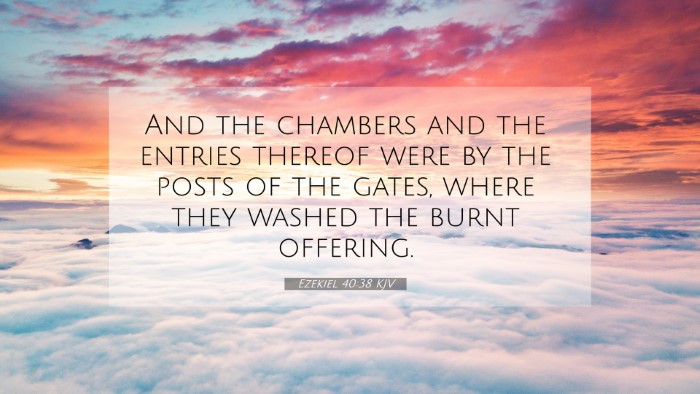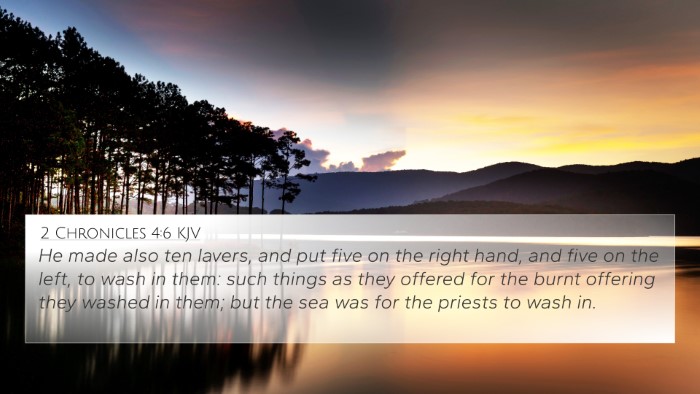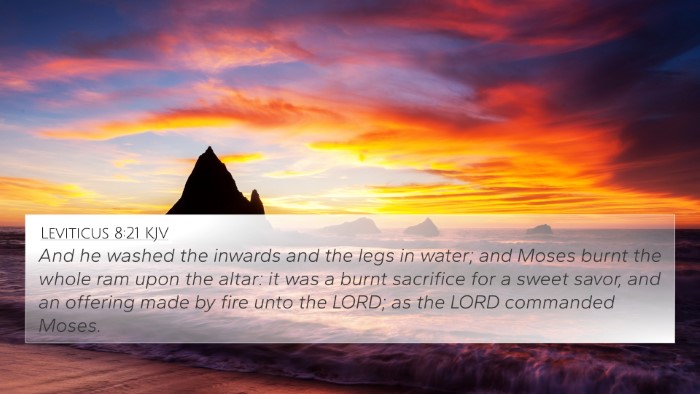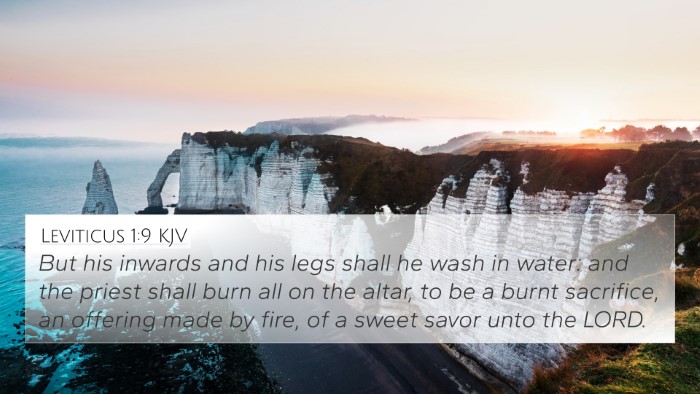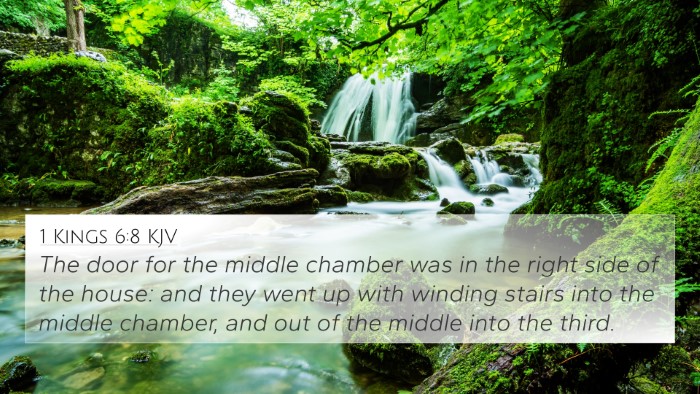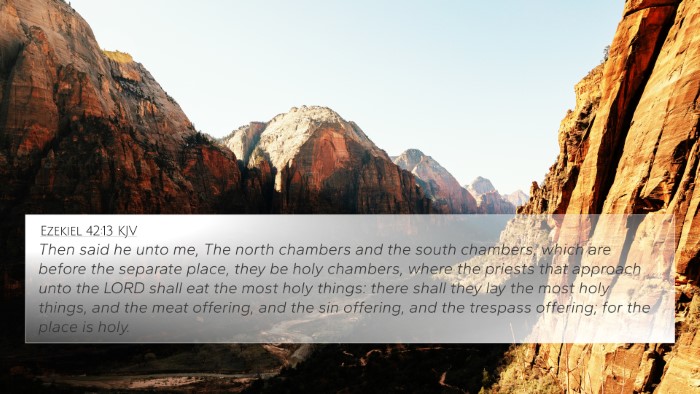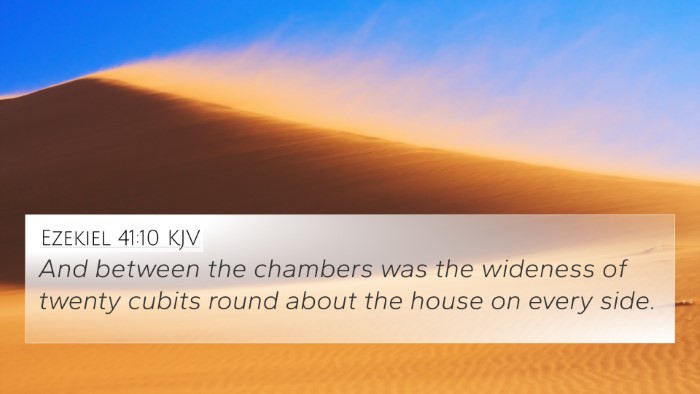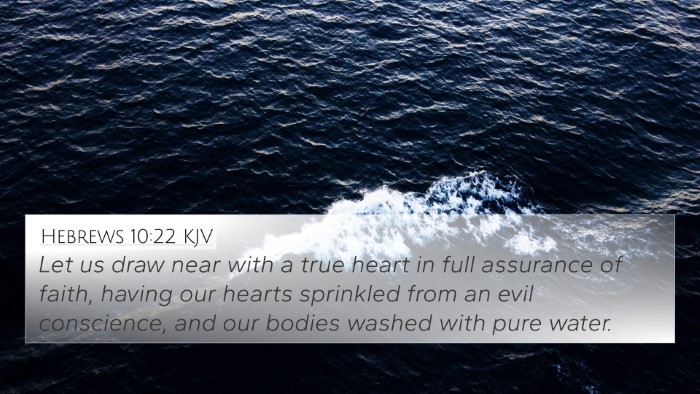Ezekiel 40:38 - Interpretation and Meaning
Ezekiel 40:38 presents a significant moment within the prophetic visions of Ezekiel, where he describes the temple and its intricate dimensions, detailing various aspects that symbolize the holiness and orderliness of God. This verse states:
"And the chambers and the entries thereof were by the posts of the gates, where they washed the burnt offering."
This detail reveals a structured system of worship that underscores the sanctity of the offerings presented to God, particularly the burnt offerings. Below, we explore various insights and interpretations from several public domain commentaries.
Summary of Biblical Insights
The following commentary insights, drawn from the works of Matthew Henry, Albert Barnes, and Adam Clarke, help elucidate the meaning of Ezekiel 40:38:
-
Matthew Henry:
Henry emphasizes the importance of organization and purification in the worship practices described by Ezekiel. He points out that washing before offerings symbolizes the need for spiritual cleanliness and preparation to approach the holy God. The act of washing suggests a theme of purification inherent in biblical sacrifices.
-
Albert Barnes:
Barnes highlights the significance of the chambers and gates as necessary for the sacrificial system. The mention of burnt offerings relates this passage to the broader sacrificial practices declared in the Levitical laws. It serves as a reminder of God's holiness, calling believers to respect and honor the processes established for worship.
-
Adam Clarke:
Clarke elaborates on the architectural details of the temple and the layout that reflects God's divine order. These specifics underline that God cares about the details of worship, encouraging believers to pursue excellence in their approach to divine matters. His commentary suggests a connection to the principles of worship godliness and sacredness.
Bible Verse Cross-References
To deepen the understanding of this passage and its connections within the scripture, here are relevant cross-references:
- Leviticus 1:9 - Discusses the process of burnt offerings, emphasizing the ritual of washing and purification.
- 2 Chronicles 29:18-19 - Reflects on the restored temple worship practices, echoing themes found in Ezekiel.
- Exodus 30:18 - The creation of the basin for washing, establishing the principle of purity before offering.
- Ezekiel 43:18-19 - Further details God’s instructions regarding sacrifices, enhancing the understanding of Ezekiel’s prophetic vision.
- Hebrews 9:22 - Connects to the reality of sacrificial offerings, emphasizing the necessity of blood for atonement.
- Psalm 51:7 - A prayer for cleansing, which resonates with the theme of purification in worship.
- Matthew 5:23-24 - Jesus speaks on the importance of reconciling before offering gifts, tying contemporary teaching back to Ezekiel's principles.
Connections Between Bible Verses
The themes presented in Ezekiel 40:38 are deeply interconnected with various scriptures throughout the Bible. Here are a few notable connections:
-
Thematic Continuities:
The concepts of holiness and divine order remain throughout both the Old and New Testaments. The integration of worship and purity found in Ezekiel informs our understanding of New Testament teachings regarding personal sacrifice and the heart's intentions in worship (see Romans 12:1).
-
Inter-Biblical Dialogue:
The descriptions in Ezekiel can be compared with the Gospel accounts that depict the temple, emphasizing Jesus' actions during His ministry (John 2:13-22) and how He fulfills the temple's purpose as the ultimate sacrifice.
-
Comparative Analysis:
Analyzing the sacrificial system as described in Ezekiel with the teachings of Paul about the body as a living sacrifice (Romans 12:1) reveals a direct correlation in worship themes across the Testaments.
Concluding Thoughts
Ezekiel 40:38 demonstrates the profound importance of order, cleanliness, and preparation in approaching God. Through the lenses of the commentaries of Henry, Barnes, and Clarke, it becomes clear that the prophetic vision provides a foreshadowing of how worship is to be approached throughout scripture. The cross-referenced verses deepen the understanding, encouraging readers to recognize the interconnected analysis of sacrificial themes and divine holiness across both the Old and New Testaments. By utilizing tools such as a Bible concordance or cross-reference guide, individuals can explore these linking Bible scriptures further and foster a more comprehensive understanding of God's overarching narrative within the holy texts.

